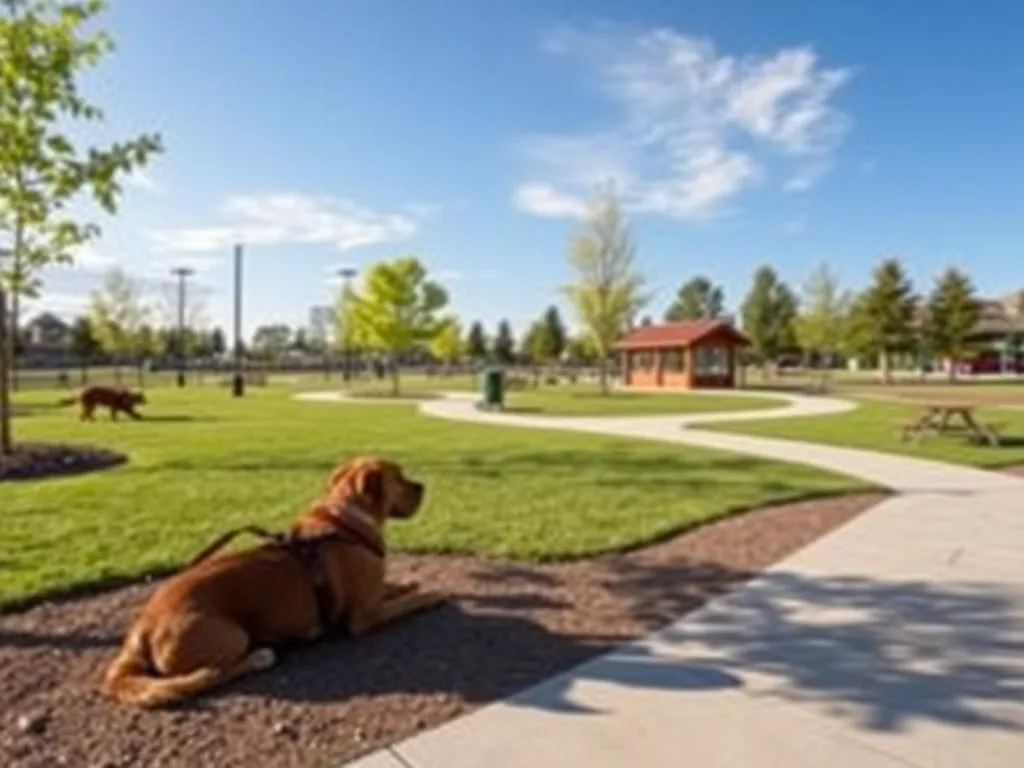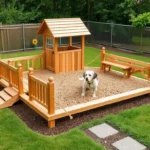
Introduction
Dog parks play a vital role in urban and suburban areas, providing a safe space for dogs to exercise and socialize while offering a community hub for their owners. These parks not only contribute to the physical and mental well-being of dogs, but they also foster social connections among pet owners, enhancing the community’s overall quality of life.
To create an effective dog park, thoughtful dog park design ideas are essential. A well-designed park accommodates the diverse needs of dogs and their owners, ensuring safety, convenience, and aesthetic appeal. Here, we explore various elements that contribute to the perfect dog park, from foundational features to engaging amenities.
Understanding Dog Park Essentials
Key Features of a Dog Park
Fenced Areas
Security is paramount in dog parks. A properly fenced area keeps dogs safe from traffic and potential hazards while ensuring they can’t escape. Recommended fence heights typically range from 4 to 6 feet, depending on the size and jumping ability of the dogs that will frequent the park. Materials like chain-link, wood, or vinyl are popular choices, providing durability and visibility.
Separate Areas for Small and Large Dogs
Creating distinct play zones for small and large dogs is important for their safety. Smaller dogs may feel threatened in an area dominated by larger breeds, while larger dogs can unintentionally injure smaller ones during play. Ideally, each area should be at least 1/2 acre, providing ample space for dogs to run and play without overcrowding.
Water Access
Hydration is crucial for active dogs, especially on warm days. Incorporating water features like drinking stations or small ponds encourages dogs to stay hydrated. Consider implementing a splash pad for added fun, allowing dogs to cool off and play.
Safety Considerations
Surface Materials
The choice of surface material impacts both safety and maintenance. Grass is a natural choice, but it requires regular upkeep and can become muddy. Gravel offers good drainage but can be rough on paws. Rubberized surfaces are soft and provide excellent cushioning, making them ideal for play areas. Each material has its pros and cons, so it’s essential to weigh these factors based on your specific park’s needs.
Visibility and Accessibility
Good visibility is critical for monitoring dogs during playtime. Design the park with open sight lines, ensuring that owners can easily supervise their pets. Additionally, accessibility is vital for all users, including those with disabilities. Wide pathways and designated seating areas can enhance the experience for everyone.
Aesthetic and Functional Design Elements
Landscaping Ideas
Native Plants
Incorporating native plants into the landscape design benefits local ecosystems and minimizes maintenance. Native flora is adapted to the local climate and wildlife, making it more resilient. Consider dog-friendly options like lavender, which is non-toxic, or ornamental grasses, which can withstand playful pups.
Shade Structures
Shade is crucial for both dogs and their owners, especially in summer. Incorporating trees, canopies, or pergolas offers respite from the heat. These structures can be strategically placed near seating areas, allowing owners to relax while watching their pets play.
Seating and Amenities for Owners
Benches and Picnic Areas
Seating is an essential element of any dog park. Comfortable benches made from durable materials should be placed throughout the park, allowing owners to rest while their dogs play. Consider creating picnic areas equipped with tables, providing a space for gatherings and social interactions.
Trash and Waste Disposal
Effective waste management is critical in dog parks. Providing easy access to waste bins encourages responsible pet ownership and keeps the park clean. Consider implementing sustainable waste solutions, such as compostable bags and designated composting bins for organic waste.
Engaging and Fun Features
Play Equipment for Dogs
Agility Courses
Agility training offers numerous benefits, including improved obedience and physical fitness. Incorporating agility courses with tunnels, jumps, and weave poles can engage dogs mentally and physically. DIY options are available for budget-friendly parks, while commercially produced equipment ensures durability and safety.
Water Play Areas
Creating water play zones, such as splash pads or doggy pools, can significantly enhance a dog park’s appeal. These areas provide a refreshing outlet for energetic dogs and can be designed with safety in mind, featuring non-slip surfaces and supervised play.
Social Interaction Spaces
Gathering Areas
Designing communal spaces fosters socialization among dogs and their owners. Consider creating a central gathering area with seating, shade, and pathways leading to different sections of the park. This layout encourages interaction and community building.
Events and Activities
Hosting events in dog parks can strengthen community bonds. Consider organizing dog shows, training sessions, or seasonal festivities that bring dog owners together. These activities promote socialization while providing an opportunity for learning and fun.
Sustainable and Eco-Friendly Design Ideas
Eco-Friendly Materials
Recycled and Sustainable Materials
Utilizing eco-friendly materials in construction not only benefits the environment but can also reduce costs in the long run. Options like recycled plastic for benches or reclaimed wood for fencing can provide durability and sustainability, keeping the park attractive and functional.
Natural Water Management Systems
Rain Gardens
Implementing rain gardens helps manage stormwater runoff and prevent flooding. These gardens can be designed to filter water naturally while providing an aesthetically pleasing landscape. Choose native plants for these gardens, ensuring they thrive in local conditions.
Xeriscaping
Consider xeriscaping to create a drought-resistant landscape that requires minimal water. This approach not only conserves water but also reduces maintenance costs. Incorporate plants like succulents, ornamental grasses, and other low-water species to create a vibrant, eco-friendly environment.
Case Studies of Innovative Dog Parks
Noteworthy Dog Parks Around the World
Cities worldwide have embraced innovative dog park designs, showcasing unique features that enhance the dog-walking experience. For instance, New York City’s Washington Square Park features a dedicated dog run with agility equipment, while San Francisco’s Golden Gate Park offers expansive green spaces and designated areas for both large and small dogs. These parks stand out for their thoughtful layouts and community-oriented designs.
Lessons Learned from Successful Designs
Successful dog parks provide valuable insights for future projects. Key takeaways include the importance of community engagement in the design process and the need for ongoing maintenance to keep facilities safe and enjoyable. Incorporating feedback from local dog owners can lead to a park that truly meets community needs, ensuring longevity and satisfaction.
Conclusion
In summary, thoughtful dog park design ideas are crucial in creating spaces that cater to the needs of both dogs and their owners. Balancing functionality, safety, and aesthetics can transform a simple park into a vibrant community hub. The right design not only enhances the dog park experience but also strengthens community ties, making it a cherished spot for all.
Call to Action
As community members, we can advocate for better dog parks by sharing ideas and experiences. Engaging with local governments and pet organizations can lead to impactful improvements in our neighborhoods.
Creating a space where dogs can play freely and safely while fostering social connections among owners is a worthy goal for any community. Let’s work together to make our dog parks the best they can be!









